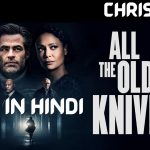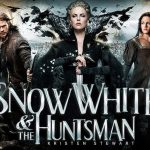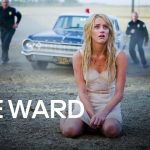Wrong Turn (2003)
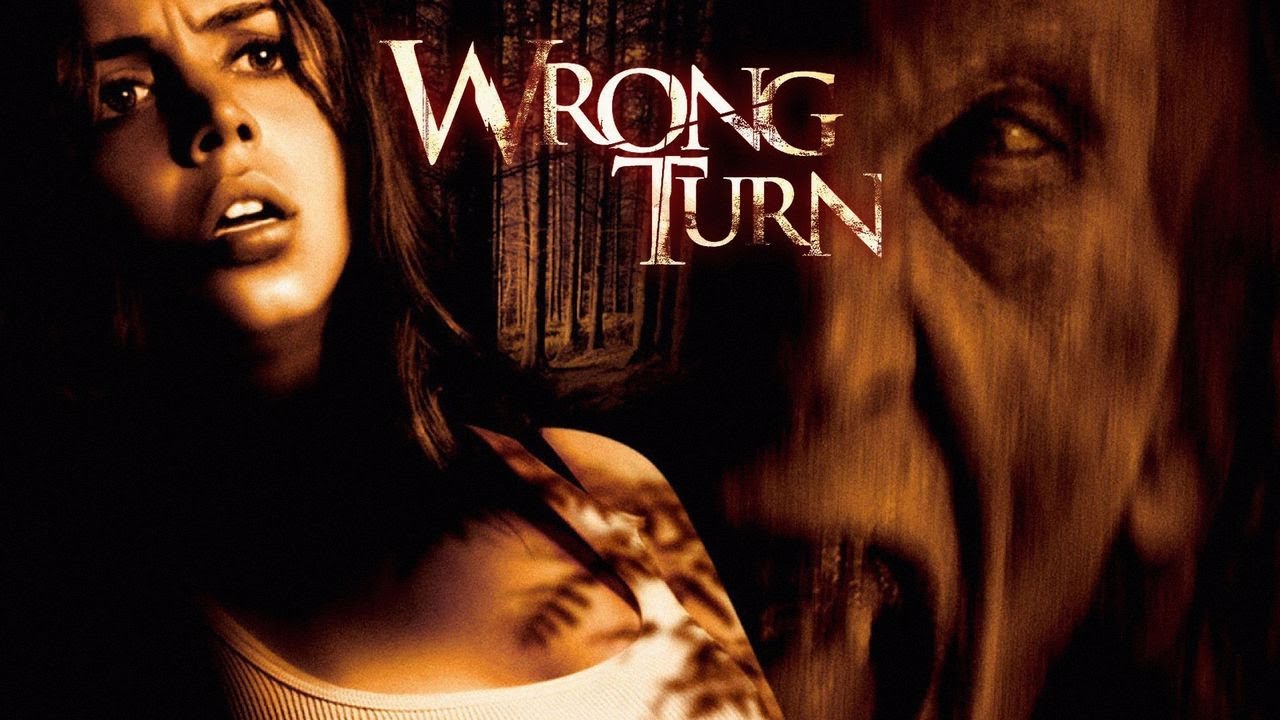
Wrong Turn is a 2003 American horror film directed by Rob Schmidt. The film quickly gained a reputation as one of the standout horror movies of the early 2000s due to its intense thrills, grotesque imagery, and suspenseful storytelling. Combining elements of slasher horror and survival terror, Wrong Turn delivers a chilling narrative about a group of young people who find themselves stranded in the remote backwoods of West Virginia, where they are hunted by a family of cannibalistic mutants.
The film begins with a group of strangers who, due to a series of unfortunate events, end up on a remote forest road after taking a wrong turn. They include Chris (Desmond Harrington), a man on his way to an important interview, and a group of friends headed for a hiking trip. After their car crashes into a tree, they quickly realize they are not alone in the woods. The tension builds as they encounter a terrifying family of inbred cannibals who have been hiding in the woods for years, leading to a fight for survival as they attempt to escape.
One of the strengths of Wrong Turn is its atmosphere, which creates a feeling of isolation and dread. The film’s use of the dense, foggy forest and the remote cabin settings heightens the sense of helplessness and danger, as the characters are cut off from civilization. The cinematography, combined with eerie sounds and the constant threat of the unknown, keeps viewers on edge throughout the film. Rob Schmidt’s direction ensures that the suspense never falters, maintaining a tense atmosphere from start to finish.
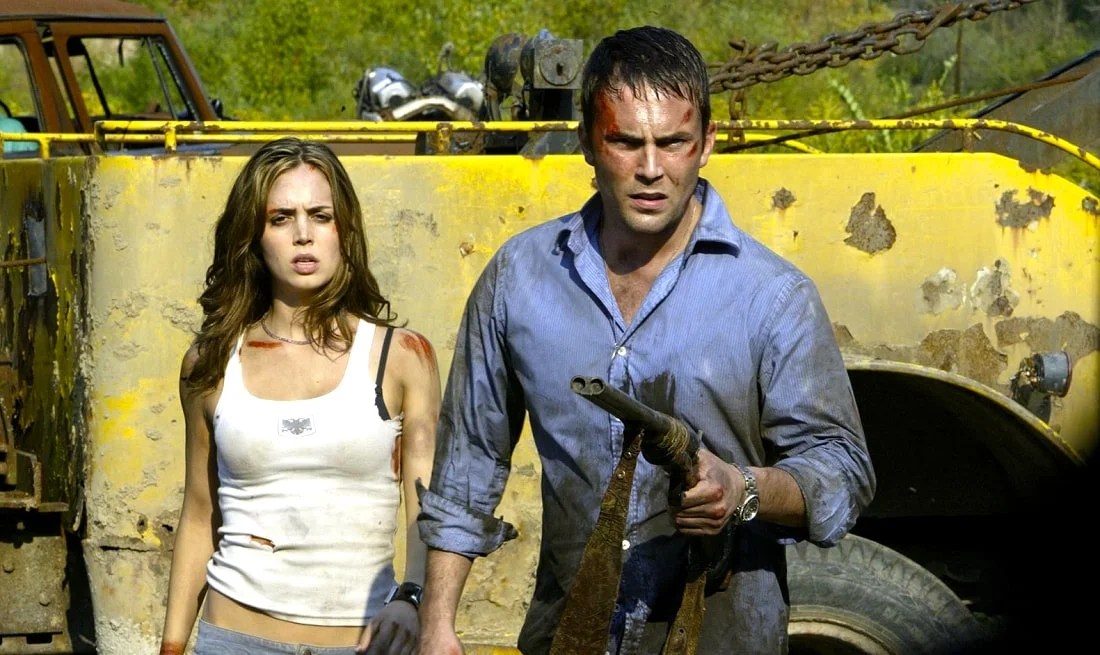
The film’s characters are fairly typical for a horror movie, but they serve their purpose in creating the necessary tension and conflict. Chris, played by Desmond Harrington, is the reluctant hero, while the group of friends provides the expected mix of vulnerability and bravery. The standout performances, however, come from the terrifying antagonists—the deformed cannibal family. Their grotesque appearance, coupled with their brutal and unrelenting nature, gives the film its visceral horror, making them one of the most memorable parts of Wrong Turn.
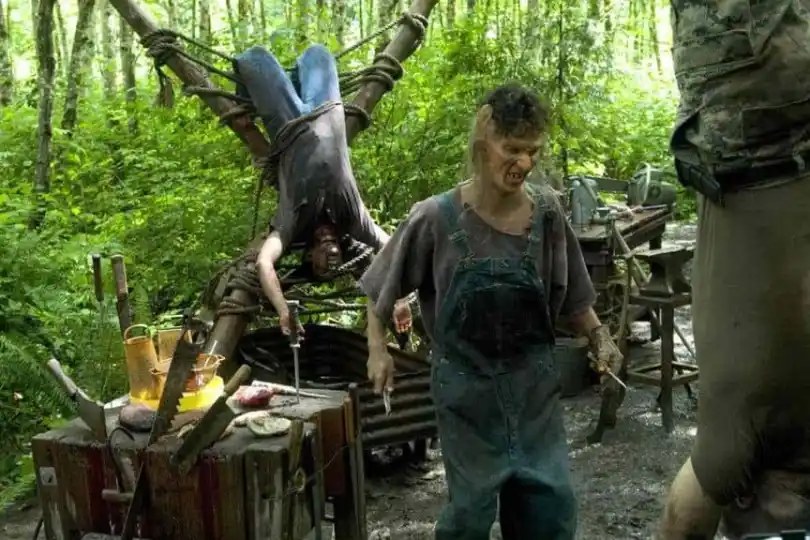
While Wrong Turn is not a particularly deep film in terms of plot or character development, it excels at delivering the thrills and scares that horror fans crave. The film uses classic horror tropes such as the stranded group, the creepy rural setting, and the cannibalistic killers, but it executes them with enough suspense and gore to keep the audience engaged. The action is fast-paced and bloody, with several scenes of intense violence that will satisfy fans of gore and slasher films.
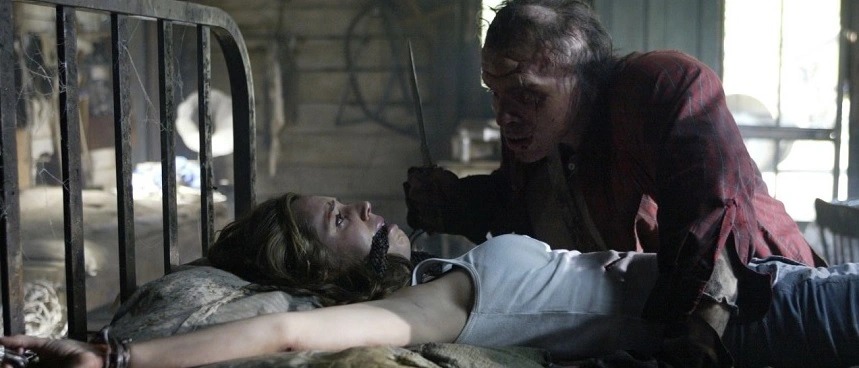
In conclusion, Wrong Turn (2003) is a classic example of early 2000s horror, combining elements of slasher films and survival horror to create a gripping, tense experience. Though it may not offer deep character development or complex storytelling, it makes up for this with its relentless tension, disturbing visuals, and bone-chilling atmosphere. Rob Schmidt’s direction and the strong performances of the cast make this film a standout in the genre, cementing its place as one of the most memorable and entertaining horror movies of its time.


